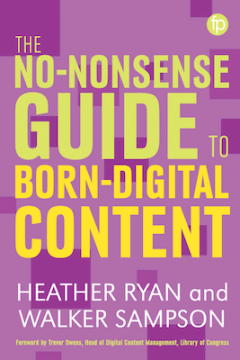
Additional Information
Book Details
Abstract
This book offers a comprehensive, entry-level guide for librarians and archivists who have found themselves managing or are planning to manage born-digital content. Libraries and archives of all sizes are collecting and managing an increasing proportion of digital content. Within this body of digital content is a growing pool of ‘born-digital’ content: content that has been created and has often existed solely in digital form. The No-nonsense Guide to Born-digital Content explains step by step processes for developing and implementing born-digital content workflows in library and archive settings of all sizes and includes a range of case studies collected from small, medium and large institutions internationally. Coverage includes:
- the wide range of digital storage media and the various sources of born-digital content
- a guide to digital information basics
- selection, acquisition, accessioning and ingest
- description, preservation and access
- methods for designing & implementing workflows for born-digital collection processing
- a comprehensive glossary of common technical terms
- strategies and philosophies to move forward as technologies change.
Heather Ryan is the Director of Special Collections, Archives & Preservation and Assistant Professor at the University of Colorado Boulder Libraries. She earned her PhD in Information and Library Science from the University of North Carolina at Chapel Hill.
Walker Sampson is the Digital Archivist at the University of Colorado Boulder Libraries. He earned his MS in Information Science at the University of Texas at Austin before beginning work at the Mississippi Department of Archives and History in 2011.
Aimed at librarians and archivists, this guide explains how to collect, preserve, and provide access to born-digital content in libraries and archives. It explains basic concepts related to digital information, various file formats, and digital storage media; various sources of born-digital content and strategies for making collection decisions; retrieving and preparing content to be brought into the library or archives; how information about born-digital collections can be collected to describe the content within different library and archives descriptive systems; how a library or archive can apply preservation practices to born-digital collections; how to provide access to content, and considerations for limitations to access, such as privacy and copyrights; strategies for designing full or partial workflows for collection processing; and strategies and philosophies in new and emerging a reas of digital storage, ways of creating digital content, and methods of serving it to users.
ProtoView
